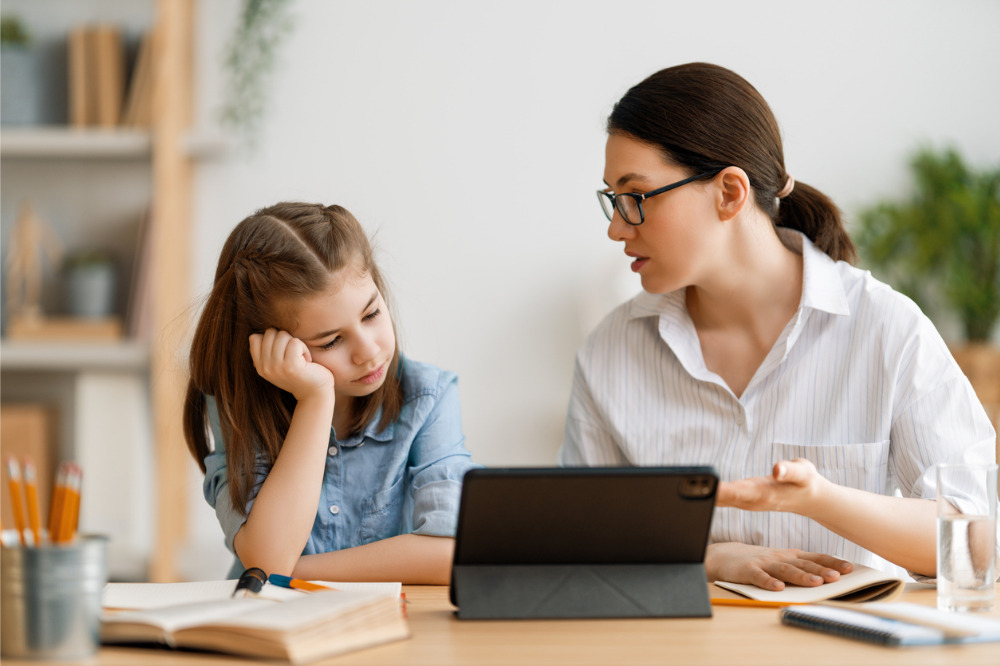
A recent study found that almost a third of students reported they were not coping well over the first half of the year. Of concern, the capacity of young people to cope had declined from 74% in term one to 61% in Term 2.
According to the research from leading school wellbeing platform Truwell 24% of young people have concerns about their health, while 17% reporting concern with acceptance and 13% concerned about safety. Acceptable levels of hopefulness and happiness was missing in 30% and 24% of students respectively
Kristen Douglas, Head of headspace Schools and Communities, has been highlighting four simple but powerful levers that schools can consider to strengthen wellbeing approaches in Terms 3 and 4. These levers are critical across the whole school community and are valuable for students, staff, school leaders, parents and carers.
What are the levers?
- Improve the mental health literacy and social emotional learning (for everyone)
- Improve help-seeking and help-receiving (for everyone)
- Improve awareness of, and access to, support (for everyone)
- Prevent, detect, respond, and reduce risk (for everyone)
Why should schools consider them?
In 2022, many Australian schools have struggled to rebalance after Covid-19. Workforce shortages, and other impacts on their school communities have meant disruption to routines, to school, and have caused disconnection. Disruption destabilises people and sometimes reduces their capacity to cope, as well as their capacity to function. Prolonged disruption means schools need to double down on supports and wellbeing of students, staff, school leaders, and parents in the coming months. School community connection is critical to restabilising safety and wellbeing.
Strengthening everyone’s emotional toolkit
Simply put, this means building language, building skills, and building confidence. As humans, we use these skills through life, and building our emotional and wellbeing toolkit is a key asset in our growth and development.
What is mental health literacy? Enhancing mental health literacy can be defined as creating opportunities to improve student, staff, and parent/carer knowledge; skills; awareness; understanding of all aspects of mental health, wellbeing, self-care, and resilience. This includes feelings, emotions, and moods. Social emotional learning is the process of developing self-awareness, self-control, and interpersonal skills.
What is help seeking and help receiving? Understanding and implementing strategies to help when you or someone else is struggling and need extra support for your mental health and wellbeing. Seeking help early can mean reducing the impact of concerns and getting back to functioning quicker without things getting on top of us.
How can we improve awareness of, and access to, support? Schools are consistent spaces for children and families and often a key source of trusted information. Schools are well placed to promote support services and strategies. This means highlighting the counselling services available, when to see our doctor, and what to do if you’re worried on the weekend or after hours. Learning how to access support early is a key skill, and having these services and strategies promoted, communicated, and visible increases the chance of people seeking help.
How can we prevent, detect, respond, and reduce risk? After impact experiences like Covid-19, natural disasters, and prolonged disruptions, we know some students staff and families will experience wellbeing concerns and issues. Schools play a key role in developing peoples’ skills to notice when things aren’t okay and share that concern so it can be attended to. If risk emerges, schools should have strategies in place to respond.
In addition to the four key levers, Douglas has been raising awareness on a number of practical strategies all schools can consider in Terms 3 ad 4 to enhance emotional regulation.
- Re-establishing rules, norms, expectations
- Regular wellbeing “check-in approaches” for students
- Enhancing the approaches to staff wellbeing, and weekly pulse checks
- Enhancing the social and emotional literacy in classrooms and across the school
- Connecting parents, carers, families through collaboration and partnership
- Student voice, empowerment, and collaboration approaches
- Building educators’ skills, capacity, and confidence in social and emotional learning
- Understanding risk and warning signs, and pathways to support and escalating risk within school and outside of school
Douglas also highlights the need for people in times of disruption and stress to have a sense of safety; calm environments; a sense of self efficacy; connectedness to their community; and a sense of hope.


